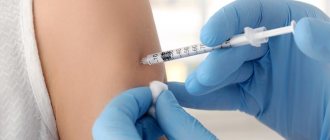Possible causes of discomfort
Itching causes discomfort in the dog; it itches and pathogenic microorganisms and fungi can penetrate through the damage. The cause of itching can be:
- ectoparasites;
- allergic reaction of various etiologies;
- skin diseases;
- hyperfunction of the sebaceous glands;
- stress;
- systemic diseases - diseases of the reproductive system, malignant processes in the body, endocrine pathologies.
The owner of a dog can rarely independently determine the cause of itching; it is necessary to seek qualified help, since the disease can be caused by several reasons.
Ectoparasites
Insects that parasitize animals include not only fleas, but also other arthropods - ticks, lice, lice.
Tick, louse, lice eater
After treating your pet for fleas, you cannot be completely sure that you managed to get rid of them. After all, flea eggs and larvae can remain on the dog’s bedding, in furniture upholstery and carpets. Therefore, you should once again examine the dog’s fur to identify eggs and adult fleas.
If the dog itches, but there are no fleas, it is worth examining the skin for the presence of other insects:
- mites: ixodid, gamas, subcutaneous (demodex), scabies, ear mites, etc.;
- lice eaters.
The Ixodid tick causes diseases such as piroplasmosis, ehrlichiosis, hemobartonillosis, and Lyme borelliosis. The secretion of the salivary glands of mites causes severe itching and scratching in dogs in the neck, ears, and head. There can be an allergic reaction to a tick and flea bite, which leads to rashes and itching. The dog itches all the time, causing damage to itself. Only a veterinarian can describe how to treat an animal for piroplasmosis.
The gamas mite parasitizes small animals (mice, rats) and birds (chickens, pigeons). The parasite can migrate to the dog's torso if there is no usual host nearby.
The subcutaneous mite is capable of parasitizing on the surface of the epidermis for a long time, feeding on horny scales. When immunity decreases, the mite penetrates deep into the skin, causing severe itching. The female lays eggs in the hair follicle, which becomes inflamed, forming a characteristic red rash. Demodicosis is most often noted on the dog's face. Itching causes scratching and red spots on the nose, around the mouth and eyes.
The scabies mite, which is called itching due to the symptom accompanying the infection, provokes scabies.
Subcutaneous mite
Interesting!
Itching occurs on a dog through prolonged contact of the skin of a healthy and sick animal. The insect is “screwed” under the skin and for this it needs at least half an hour. The animal is infected by an already fertilized female, who lays eggs in the outer layer of the skin. The emerging larvae actively move, gnawing passages, which is why the dog itches.
Ear mites parasitize the ears of cats and dogs, feeding on the secretions of the sebaceous glands and wax. Temporarily, until it gets into the ear canal, the insect can be on any part of the body, gnawing passages in the skin to get to the lymph. The affected area begins to itch very much, so the dog shakes its ears and begins to scratch them vigorously.
Any type of mite has symptoms both characteristic of a particular species and common to all, among which the main one is itching. Treatment includes local and systemic drugs. The complex is prescribed only by a veterinarian; self-medication can lead to serious consequences.
But infection with ticks, lice and fleas can be prevented by treating the dog with one of the medications in the form of spray Bars, Bolfo, Frontline, Defendog). The drops have proven themselves well.
- Frontline;
- Bars Forte;
- Barrier;
- Blokhnet;
- Advocate;
- Celandine;
- Advantix;
- Practitioner.
It is also recommended to put a collar on the animal (Kiltiks, Foresto, Celandine).
Products for dogs
Signs
It is quite easy to understand that a dog is experiencing discomfort in the ear area. Watch the beast. The posture, actions and sounds made will speak for themselves:
- The animal takes a sitting position more often than usual and intensively itches with its hind paw. At the same time, a wide variety of sounds can be made, from a threatening growl to a whine, depending on the sensations caused. After all, scratching can be both pleasant and painful.
- In a lying position, the pet slowly massages the auricle with its front paw. This movement indicates that the unpleasant sensations have been bothering you for quite a long time.
- Long-eared dogs may shake and shake their heads with sounds that are not typical for them.
Pay attention to any manipulations by your pet with its ear canals, especially if it has not previously shown such constant interest in them. It is necessary to notice the manifested discomfort as early as possible, since through negligence the sufferer can severely scratch the skin, further increasing the suffering.
Allergic reaction to various irritants
If your dog is constantly itching and testing for fleas and other parasites is negative, you may suspect an allergy caused by the following factors:
- flea bites;
- substances entering the body by air;
- chemicals from hygiene products;
- food or its change;
- vaccines and vaccinations.
The human and dog bodies are very different and, despite the fact that the allergic components are similar and their mechanism of action is the same, the symptoms are different. In dogs, allergies are prolonged by itching and skin disorders. Subsequently, a secondary infection takes root at the site of severe scratching, which is accompanied by inflammation.
Fleas cause allergies, which is the body's reaction to a foreign protein that enters the bloodstream with the secretions of the insect's salivary glands. Even one flea caught on a dog can cause an allergy in the animal that once suffered from fleas.
Atopic dermatitis, which doctors estimate affects 4 to 16% of dogs, is caused by:
- plant pollen;
- household dust;
- excrement and particles of chitinous cover of synanthropic insects;
- mold fungi;
- dead particles of the epidermis;
- bird feathers and down.
Atopic dermatitis in dogs
Interesting!
When an allergen enters the body, it stimulates the formation of antibodies, the synthesis of which depends on genetic predisposition. Skin-sensitizing antibodies are formed in the cells, combining into antigen/reagent complexes. It is they and the bioactive substances released during the tissue reaction that lead to rashes, the feeling of “goosebumps” due to involuntary twitching of small muscles, and itching.
The dog often itches, especially in the area of the toes, belly, tail, and back. Red spots form under the fur, which are easy to notice, especially in short-haired dog breeds.
Food allergies are caused by proteins (anaphylaxis) or non-protein components of food (atopy). It is necessary to distinguish between intolerance to certain foods and true allergies, therefore, only a specialist can decide how to treat a food allergy after a differential diagnosis.
Allergens
Allergies in dogs are most often caused by foods such as horse meat, beef, and milk. The second group of allergenic products are soy, chicken, and lamb. Many premium foods contain these products. The allergy is accompanied by such severe itching that the dog itching, biting these places, can completely erase the incisors. At the site of severe licking, hair falls out, leading to complete baldness, discoloration of the coat, pyoderma, coarsening and hyperpigmentation of the epidermis.
In long-haired dogs, an allergic reaction provokes the development of a severe form of dermatitis. If the Pekingese itches, and on parts of the body the fur is noticeable, sticking together, as if from saliva, then the cause may be wet dermatitis. When cutting the wool, a very complex picture of pathology becomes visible.
Allergies can be triggered by the use of medications - eye and ear drops, vaccines, etc. The manifestations are the same as with other types of allergies. If your dog itches after taking flea drops, then it is highly likely that he is allergic to this product.
Dermatosis, which is accompanied by itching, can be caused by contact with the collar. This form of the disease is often observed in puppies, since their delicate skin is very sensitive to constant exposure to insecticides. The puppy is itching, trying to remove the collar.
To treat allergic reactions, veterinarians prescribe cortisone and other antihistamines that help relieve skin manifestations and itching (Benadryl, Tavist, Amitriptyline, Atarax).
Yorkie often itches: what to do?
If your Yorkie is itching frequently, it is most often a sign that there is a problem. Occasional scratching is one thing; It’s quite another to constantly persistently scratch the same places. Persistent itching does not appear just like that. It causes serious anxiety to the animal, which cannot rest. In some cases, he even refuses to eat. Let's look at the main causes of itching in the Yorkshire Terrier.
Ate something wrong
The most common situation is an allergic reaction to certain foods (components, medications). Your dog may have intolerance to certain foods. By the way, this is not at all a rare occurrence. The prevalence is approximately the same as in humans. Owners who feed their dogs natural food are at increased risk. The food itself can be prepared in different ways. If some kind of “yummy” periodically falls from the host’s table, each such case can cause rejection of the body (manifested in the appearance of severe itching). It is important to detect and stop irritation in time. In this case, it will be the least dangerous.
Dermatitis
Skin inflammation in a Yorkie can occur due to an infectious disease, medication, dust, street dirt, and the use of cosmetics. It should be remembered, after which the pet began to persistently itch. Identify the site of scratching and examine it for inflammation. Dermatitis often manifests itself with accompanying symptoms - mucus from the nose, tears from the eyes, hair loss. Skin diseases are often accompanied by indigestion.
Skin inflammation - pyoderma
Infectious skin diseases can occur for various reasons. If your Yorkie rolls around in street dust or swims in a natural body of water, illnesses may develop due to bacteria entering the skin cells. Peeling is the most obvious and harmless manifestation, causing itching and redness. If purulent papules, ulcers, or erosions form, you should immediately contact a veterinarian to prescribe a therapeutic course.
Problems with the endocrine system
Less noticeable are diseases of the endocrine system (thyroid gland). Diabetes mellitus, Cushing's syndrome and hypothyroidism are more difficult to diagnose. But they can also cause itching in a Yorkie, as a result of which the dog will itch periodically or constantly. If you have increased appetite and overeating (obesity) and there is no irritation on the skin, you should get tested to rule out the listed diseases.
Skin damage by parasites (lices, ticks, lice eaters, fleas)
Parasitic diseases are one of the most common reasons why your Yorkie often itches. Pruritic scabies, caused by various parasites, is considered very persistent. In some, such manifestations may be accompanied by a change in the color of the epidermis, in others - by local hair loss. Often the pet is so itchy that it constantly tries to gnaw itself, and characteristic bites appear on its body. To combat fleas, lice, ticks and lice, appropriate preparations should be selected. Some of them are taken orally, others are applied to the skin.
Remember, any use of medications must be accompanied by a prescription from a veterinarian. To determine the true cause, the doctor prescribes a series of tests. The data obtained will help determine what is best to do in a particular situation.
Skin diseases
The dog itches a lot and with various skin diseases. The most common are lichen, wet or dry eczema, dermatoses.
Dermatophytosis in dogs
Dermatophytosis is often seen in puppies, young animals, and dogs with compromised immune systems. Mycoses cause not only itching, but also hair loss, nodular lesions of the skin, peeling and yellowing of the nails, peeling and cracking of the pads on the paws.
The doctor prescribes treatment of the body with antifungal agents - shampoos (Nizoral, Dermazol) or the drug for dogs Imaverol. For systemic treatment, the following drugs are used - Orungal (Itraconazole), Lamisil (Terbinafine), Nizoral, Oronazole (Ketoconazole).
In healthy dogs, dandruff is absent or invisible. Dandruff flakes can form under the influence of various factors that cause dry or oily seborrhea. When a Spitz itches or the itching bothers representatives of other “sofa” breeds, the cause is dry seborrhea. These animals are bathed frequently, which leads to dysfunction of the sebaceous glands and dry skin. Also, a lack of fat leads to the formation of dry dandruff. If the cause is not a fungal infection or systemic diseases, then the doctor prescribes antiseborrheic shampoos.
Inflammatory dermatitis often occurs in dogs with large folds of skin. If a pug itches, or a chow-chow, bulldog, or mastiff scratches its muzzle with its paws, then it is worth checking the folds, where you can detect redness of the skin and increased humidity, swelling and destruction of the epidermis.
Treatment of dermatoses begins with treatment with antibacterial, disinfectant detergents, and then treated with drying preparations. If the process is advanced, the doctor prescribes antibiotics.
Hyperfunction of the sebaceous glands
Greasy tail in dogs
Some dogs exhibit a pathology called “greasy tail.” This pathology is more common in cats, but can also occur in dogs. Hyperfunction of the sebaceous glands, located like a rosary on the upper surface of the tail and around its base, leads to sticking of the hair, the formation of black spots on the skin, and the appearance of oily seborrhea. Itching causes the dog to chew its tail, “ride” on its butt, and causes severe discomfort. A dog's licking of affected areas can cause alopecia or serious tail injuries.
Treatment consists of treating the wool with special shampoos to regulate the function of the sebaceous glands. Until the cause of hyperfunction is determined, this is the only method.
Stress
In dogs, the nervous system reacts to prolonged exposure to stress factors with various manifestations, including skin ones. Short-term factors - a visit to the doctor, injections, a sharp shout, an unpleasant strong odor - cause a reaction that disappears when the irritating factor disappears. Prolonged stress can lead to various external manifestations, including increased licking and biting of certain parts of the body due to allergies or seborrhea.
Treatment consists of eliminating the stress factor, providing positive emotions, and distraction. Occupational therapy brings a good therapeutic effect. For chronic stress, your doctor may prescribe sedatives.
Whatever causes the dog’s itching, the owner should pay close attention to this and promptly contact a veterinary hospital. Self-medication can not only cause serious consequences, but also miss the time required for a complete cure.
Causes
Many things can cause an animal to experience discomfort and furiously scratch its ear. Most of the reasons are harmless and can be easily corrected on your own without the involvement of third-party specialists. However, it is possible that itching is a sign of a serious illness that requires professional comprehensive treatment.
You can understand the cause of your pet’s suffering by comparing all the signs.
The main problems causing scabies:
- A foreign body that gets into the ear during an excessively vigorous game or walk in nature . It can be almost anything, from some household item to a blade of grass or a seed. It is easy to understand that the animal is suffering because of this. Upon examination, you will notice that the irritation is very localized, and there is no excess discharge or unpleasant odor. If the object that created the problem is visible to the naked eye, you can try to remove it yourself using tweezers. However, if you are in doubt about the exact location, it is better to leave this matter to professionals who will take an x-ray to confirm the location of the foreign body, and then carefully remove it without causing damage to the hearing aid.
- Water that got in while swimming. If this happened very recently, then it will not have time to cause much harm. It will be enough to carefully remove it with a dry cotton swab, having first placed the dog in a position in which it can tilt its head.
- Otodectosis or ear mites. The microscopic insect causes enormous harm to the skin by gnawing its passages in it. It is not difficult to identify the disease based on specific symptoms. The dog will be restless because, in addition to constant itching, he experiences pain. Usually both ears are affected, and crusts and a layer of unpleasant brownish-black plaque from a mixture of sulfur, ichor and tick waste quickly form on the skin. You can get rid of the scourge by thoroughly cleaning the affected area and treating it with a special preparation. To prevent this from happening again in the future, it is necessary to regularly treat the dog with antiparasitic drugs and not allow it to communicate with other people’s suspicious animals.
- Otitis media occurs for a variety of reasons . It can be triggered by pathogenic bacteria, infection, parasites, accumulations of sulfur and hematomas. It is impossible to cure the disease on your own, since it will not be possible to determine the root cause, and sometimes the type of disease. Depending on the location of the focus, there are external, middle and internal views. The last form is the most dangerous, as if left untreated it can lead to complete hearing loss. Otitis media is easy to spot. The animal constantly whines, experiencing pain, and purulent fluid with an unpleasant odor is released from the auricle. A red, inflamed ear with a clearly elevated temperature will confirm the correctness of the diagnosis.











